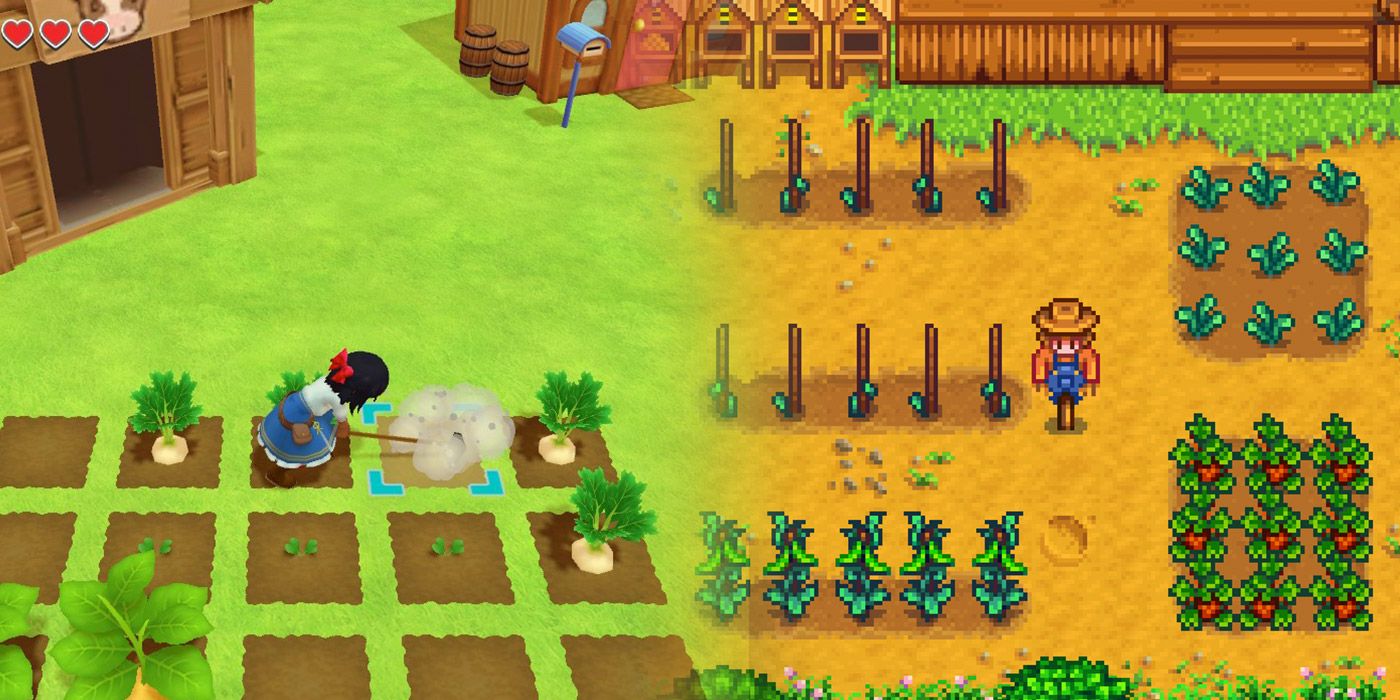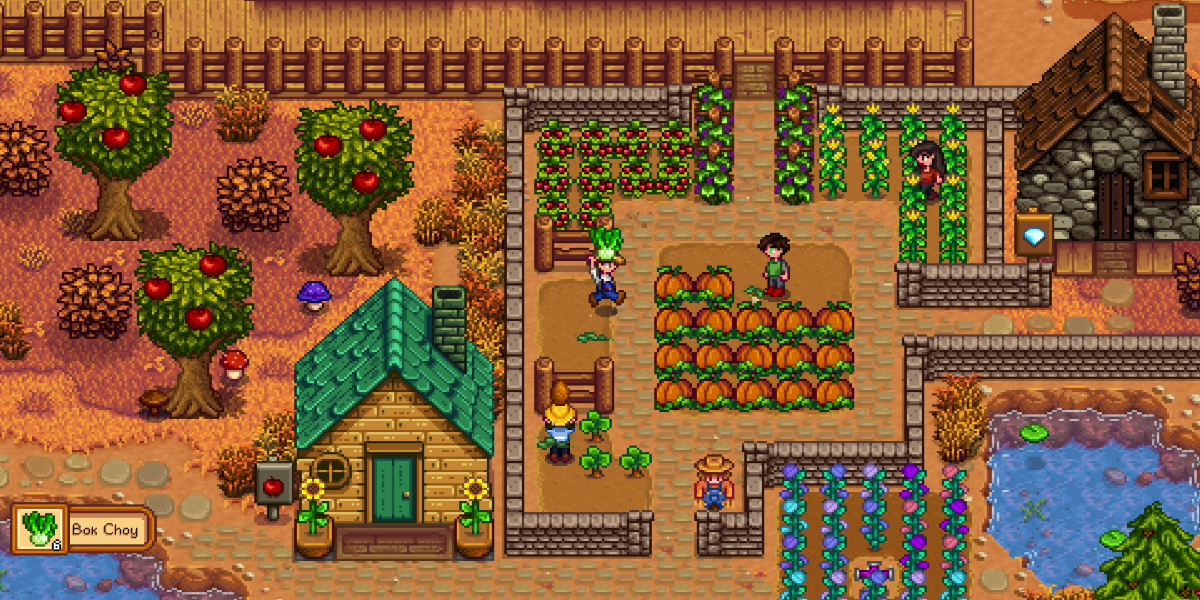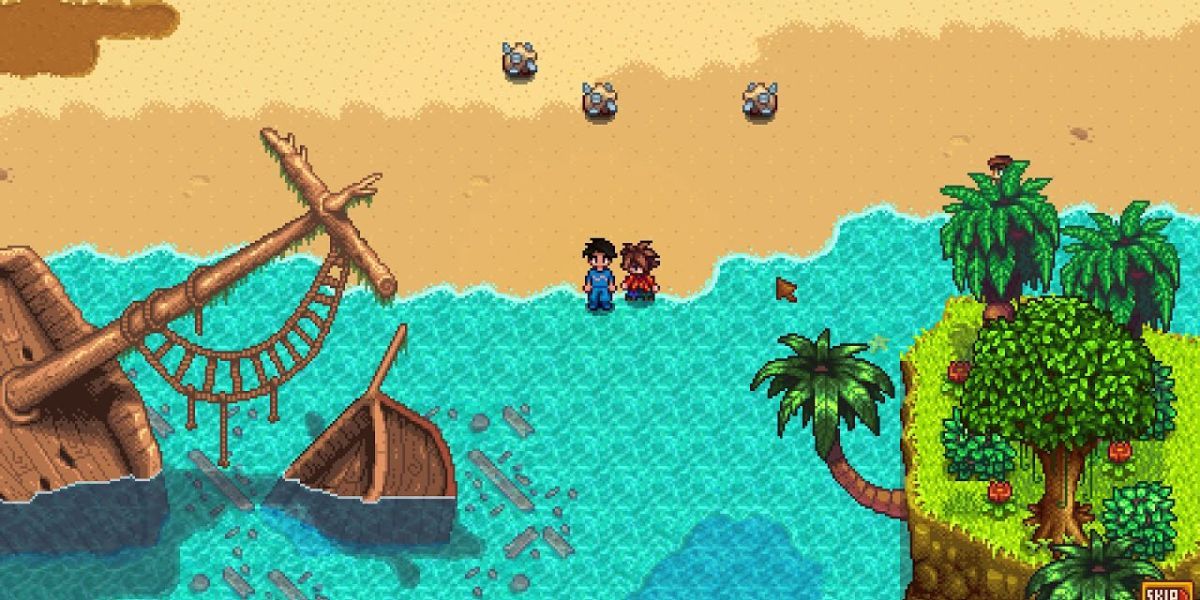
Stardew Valley is one of the most popular indie games out there, becoming popular both with gamers and those who don't choose to use that label. It was created by one person, Eric "ConcernedApe" Barone, who fell in love with the early Harvest Moon games but felt that the quality of the series had declined after Harvest Moon: Back to Nature.
Harvest Moon was the first series of games to introduce the popular format found in farming simulators, where players are tasked with growing crops, raising livestock, and courting a villager through dialogue and gifts. Hours pass within seconds, and each day is finished in a matter of minutes, forcing players to master task management. Each season features a unique set of crops that can only be grown within those 28 days.
RELATED: Stardew Valley Super Zoo Story Controversy Explained
But ironically, Stardew Valley has become the most mainstream farming simulator on the market, spawning many inspired games and even one that fans like to call a "ripoff." And funnily enough, February, the only month consisting of 28 days is called "Stardew Valley month" rather than "Harvest Moon month." But how much Harvest Moon content did Eric Barone borrow when developing Stardew Valley?

When looking at gameplay from the original Harvest Moon on the SNES, it's easy to see where Stardew Valley gets its visual inspiration from. With clearer pixels, better lighting, higher frame rates, and color correction, Stardew Valley almost looks like a remastered version of Harvest Moon. Some models look similar, such as silos and tree stumps, while others it's obvious where the design originally came from, such as character avatars and tools. This is because Barone used what was originally just a Harvest Moon clone for his own purposes to practice and learn programming firsthand while he struggled to get a job as a developer.
And when it comes to the gameplay mechanics, Stardew Valley comes from more than just Harvest Moon. In fact, many of the mechanics in Harvest Moon regarding how tools interact with the player's surroundings are influenced by early Legend of Zelda games as well, like how Link cuts grass, and Eric Barone adopted these as well. And after Harvest Moon proved to be successful with a line of games spanning across generations of consoles, Stardew Valley then borrowed these well-balanced systems, such as how animals must be petted each day to increase friendship, and therefore the quality of animal products, and how the player must balance their daily stamina levels with how much time is in each day.
While some might accuse Stardew Valley of being a copycat for doing this, Stardew Valley also innovated the genre in many ways that other inspired games such as Coral Island. Even the newest Story of Seasons game, the rebranded version of Harvest Moon, borrowed systems that Stardew Valley created, including enemies in the mines and machines that turn animal products into artisan goods.
RELATED: Will Coral Island Be Just Another Stardew Valley Clone?

Part of Eric Barone's disappointment with Harvest Moon games was that they always ended after a certain number of years, usually two. But Barone simply wanted the game to keep going, as well as to keep playing different iterations of the same game. Years after Stardew Valley's original release, a multiplayer mode was added into Stardew Valley along with profit margins and other ways of making the gameplay more difficult, breathing new life into a beloved indie game, and adding hours upon hours of replay value. Later on, the Beach Farm was added as well as Ginger Island, giving players an incentive to work well past the initial goals of completing the Community Center and getting married.
Stardew Valley is available on PC, PS4, Switch, and Xbox One.

